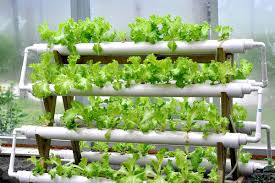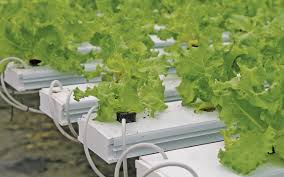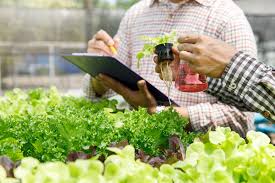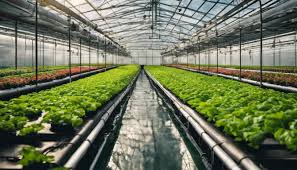Hydroponics is an innovative method of growing plants without soil, utilizing nutrient-rich water instead. This approach has gained popularity for its efficiency and potential to produce high yields in smaller spaces, making it ideal for urban environments and areas with poor soil quality.
By allowing plants to absorb nutrients directly from the water, hydroponics can significantly speed up growth rates and minimize the risk of pests and diseases commonly associated with soil-based gardening.
As more people seek sustainable and productive gardening methods, understanding how to build a hydroponic system is increasingly relevant for both hobbyists and serious growers.
Building a hydroponic system may seem daunting, but with the right materials and knowledge, anyone can create a functional setup. The process involves several key components, including a water reservoir, a pump, a growing medium, and a nutrient solution. Each of these elements plays a crucial role in ensuring that plants receive the necessary support and nutrients to thrive.
Hydroponic systems come in various forms, such as deep water culture, nutrient film technique, and aeroponics, each offering unique benefits depending on the grower’s goals and available space.
The first step in building a hydroponic system is selecting the right type for your needs. Deep water culture is one of the simplest systems, where plant roots are submerged in a nutrient-rich solution, allowing them to absorb water and nutrients easily.
Nutrient film technique, on the other hand, involves a thin film of nutrient solution flowing over the roots, providing oxygen and nutrients while preventing waterlogging.
Aeroponics takes this a step further by misting the roots with nutrient solution, creating an environment that promotes rapid growth. Each system requires different materials and setup, so it’s essential to research and choose the one that best suits your situation.
Once you have decided on a system type, the next step is to gather the necessary materials. This includes a container for the reservoir, a pump to circulate the nutrient solution, tubing to deliver the solution to the plants, and a growing medium such as rock wool, clay pellets, or coconut coir.
These components can often be found at local gardening stores or online retailers. It’s important to choose high-quality materials that will withstand the rigors of hydroponic gardening.
After assembling the materials, the setup process begins. This involves installing the pump and ensuring that the water reservoir is adequately sealed to prevent leaks. The growing containers should be placed securely above the reservoir to allow gravity to assist in the drainage of excess nutrient solution. Proper placement and orientation of the growing medium are critical, as they directly impact the health and growth of the plants.
Once the system is constructed, it’s time to add the nutrient solution and plant your seeds or seedlings. Regular monitoring of the pH and nutrient levels is essential for maintaining optimal conditions. This will help ensure that plants receive the right nutrients for healthy growth, which is one of the primary advantages of hydroponic systems.
Building a hydroponic system is a rewarding endeavor that can lead to successful plant growth in a controlled environment. With the right materials, knowledge, and commitment, anyone can enjoy the benefits of hydroponics, making it a valuable skill for both novice and experienced gardeners.
Benefits of Hydroponic Systems

1. Space Efficiency: Hydroponic systems utilize vertical space, allowing for higher crop yields in smaller areas, making them ideal for urban farming or locations with limited land availability.
2. Faster Growth Rates: Plants often grow faster in hydroponic systems due to optimal nutrient delivery and environmental control, resulting in quicker harvests compared to traditional soil methods.
3. Water Conservation: Hydroponics uses significantly less water than traditional agriculture since it recirculates water, reducing waste and making it an environmentally friendly option.
4. Reduced Pesticide Use: The controlled environment of hydroponic systems minimizes exposure to pests, reducing the need for chemical pesticides and promoting healthier produce.
5. Year-Round Production: Hydroponic systems can be operated indoors or in greenhouses, allowing for year-round cultivation regardless of external weather conditions.
Types of Hydroponic Systems
1. Nutrient Film Technique (NFT): In NFT systems, a thin film of nutrient-rich water continuously flows over plant roots, allowing for efficient nutrient uptake while maintaining good oxygen levels.
2. Deep Water Culture (DWC): DWC systems suspend plant roots in a nutrient solution, with air stones providing oxygen; this method is simple and effective for fast-growing plants.
3. Ebb and Flow (Flood and Drain): This system periodically floods the plant roots with nutrient solution and then drains it, ensuring adequate oxygenation while delivering nutrients.
4. Aeroponics: In aeroponic systems, plant roots hang in air and are misted with a nutrient solution, promoting rapid growth and efficient oxygen absorption.
5. Wick System: A passive method where a wick draws nutrient solution from a reservoir to the plants; this system is simple and requires no pumps, making it suitable for beginners.
Read Also: The Health Benefits of Using Maggi Masala on your Cooking
Essential Materials and Equipment

1. Grow Lights: LED or fluorescent grow lights are essential for providing the right spectrum of light for plant growth, especially in indoor systems where natural light may be insufficient.
2. Nutrient Solutions: Pre-mixed hydroponic nutrient solutions provide essential minerals and nutrients for plant growth; regular monitoring and adjustments are necessary for optimal plant health.
3. Growing Medium: While hydroponics often uses water, growing mediums like rock wool, coconut coir, or perlite support plants and retain moisture, ensuring stability and root health.
4. pH Meter: A pH meter is crucial for monitoring the acidity or alkalinity of the nutrient solution, as maintaining the correct pH range is essential for nutrient absorption.
5. Air Pump and Stones: These are used in systems like DWC to ensure adequate oxygen supply to plant roots, promoting healthy growth and preventing root rot.
Designing Your Hydroponic System
1. Determine Your Space: Assess the available space for your hydroponic system, whether it’s indoors, outdoors, or in a greenhouse, to ensure you choose an appropriate system size and type that fits your environment.
2. Choose a Hydroponic System Type: Select a hydroponic system that suits your needs, such as NFT, DWC, or Ebb and Flow, based on your experience level, available resources, and desired crops.
3. Plan for Accessibility: Ensure that your design allows for easy access to plants for maintenance, harvesting, and monitoring, helping to reduce stress on the plants and improve efficiency in your workflow.
4. Include Water and Nutrient Delivery: Design a reliable water and nutrient delivery system that ensures even distribution to all plants, minimizing waste and maximizing efficiency in nutrient uptake.
5. Incorporate Drainage and Aeration: Ensure proper drainage in your design to prevent waterlogging and root rot, while including aeration systems to provide necessary oxygen to the plant roots.
Setting Up the Growing Environment
1. Light Management: Install appropriate grow lights that provide the right spectrum for photosynthesis; ensure they are positioned correctly for optimal light exposure to all plants.
2. Temperature Control: Maintain a suitable temperature range (typically between 65°F and 75°F) for plant growth using heating or cooling systems, and regularly monitor temperature levels.
3. Humidity Levels: Monitor and control humidity within the growing area, aiming for a range of 40% to 60% to promote healthy plant growth and prevent issues like mold.
4. Air Circulation: Incorporate fans or ventilation systems to ensure adequate air circulation, preventing stagnant air and maintaining even temperature and humidity levels.
5. Cleanliness and Sanitation: Keep the growing environment clean and sterile to minimize the risk of pests and diseases, which can significantly impact plant health and yield.
Choosing the Right Nutrients
1. Understand Plant Nutritional Needs: Research the specific nutrient requirements of the plants you intend to grow, focusing on macronutrients (nitrogen, phosphorus, potassium) and micronutrients (iron, calcium, magnesium).
2. Select Quality Nutrient Solutions: Choose high-quality, water-soluble nutrient solutions designed for hydroponics to ensure proper nutrient availability and uptake by plants.
3. Monitor Nutrient Levels: Regularly check the nutrient concentration and pH of your solution to ensure they remain within the optimal range for your chosen plants.
4. Adjust Nutrient Ratios: Be prepared to adjust nutrient ratios based on plant growth stages, as seedlings and mature plants have different nutritional requirements.
5. Keep Records: Maintain records of nutrient application and adjustments, helping you refine your approach for future crops based on past experiences.
Read Also: 16 Medicinal Health Benefits Of Piper excelsum (Kawakawa)
Plant Selection for Hydroponics

1. Consider Growth Cycle: Choose plants with suitable growth cycles for your hydroponic system; fast-growing varieties like lettuce and herbs are ideal for beginners.
2. Assess Plant Size and Space Needs: Select plants that fit your available space and system design; compact plants are better suited for smaller systems.
3. Research Compatibility: Ensure that chosen plants can thrive in the same environmental conditions and nutrient solutions, avoiding competition for resources.
4. Choose Disease-Resistant Varieties: Opt for disease-resistant plant varieties to reduce the likelihood of crop loss due to pests and diseases.
5. Test Different Plants: Experiment with a variety of plants to discover which ones perform best in your specific hydroponic setup, allowing you to refine your choices over time.
Maintenance and Monitoring
1. Regular System Checks: Conduct frequent inspections of your hydroponic system, including pumps, reservoirs, and nutrient delivery systems, to identify and address any issues before they escalate.
2. Monitor pH and EC Levels: Regularly measure the pH (ideally between 5.5 and 6.5) and electrical conductivity (EC) of your nutrient solution to ensure optimal nutrient availability and uptake by the plants.
3. Clean the System: Maintain cleanliness by regularly cleaning your growing medium, reservoir, and equipment to prevent algae growth, nutrient buildup, and pathogen development.
4. Check Plant Health: Observe your plants for signs of stress, nutrient deficiencies, or diseases; early detection allows for timely intervention and can help prevent larger problems.
5. Adjust Nutrient Solution: Be prepared to adjust your nutrient solution based on plant growth stages and environmental changes, ensuring your plants receive the necessary nutrients for optimal growth.
Common Challenges and Solutions
1. Algae Growth: Algae can thrive in hydroponic systems, competing with plants for nutrients. To combat this, keep your reservoir covered to limit light exposure and maintain cleanliness.
2. Nutrient Deficiencies: Signs of nutrient deficiencies, such as yellowing leaves, can indicate imbalances. Regularly test your nutrient solution and adjust concentrations as needed.
3. pH Imbalances: Sudden changes in pH can harm plant growth. Use pH stabilizers or buffers to maintain stable levels and check pH regularly with a reliable meter.
4. Pests and Diseases: Pests like aphids or diseases like root rot can threaten plant health. Implement preventive measures like introducing beneficial insects and maintaining good sanitation practices.
5. Equipment Failures: Pump failures or power outages can disrupt nutrient delivery. Have backup systems in place and consider battery-operated pumps for emergencies to ensure your plants receive uninterrupted care.
Tips for Successful Hydroponic Gardening
1. Start Small: For beginners, starting with a small hydroponic system allows you to learn the basics without becoming overwhelmed. Expand as you gain confidence and experience.
2. Choose Easy-to-Grow Plants: Begin with forgiving crops such as lettuce, herbs, or spinach that are generally more tolerant of growing conditions and easier to manage.
3. Keep Records: Maintain a journal of your hydroponic practices, including nutrient solutions, plant growth, and environmental conditions, to refine your approach and learn from your experiences.
4. Stay Educated: Continuously educate yourself about hydroponic gardening through online resources, books, or local gardening clubs, keeping you updated on best practices and new techniques.
5. Network with Other Growers: Engage with local or online hydroponic communities to share experiences, ask questions, and gain insights from others who have faced similar challenges.
Do you have any questions, suggestions, or contributions? If so, please feel free to use the comment box below to share your thoughts. We also encourage you to kindly share this information with others who might benefit from it. Since we can’t reach everyone at once, we truly appreciate your help in spreading the word. Thank you so much for your support and for sharing!
Read Also: How to Graft an Avocado Tree to Produce Avocado Fruit






